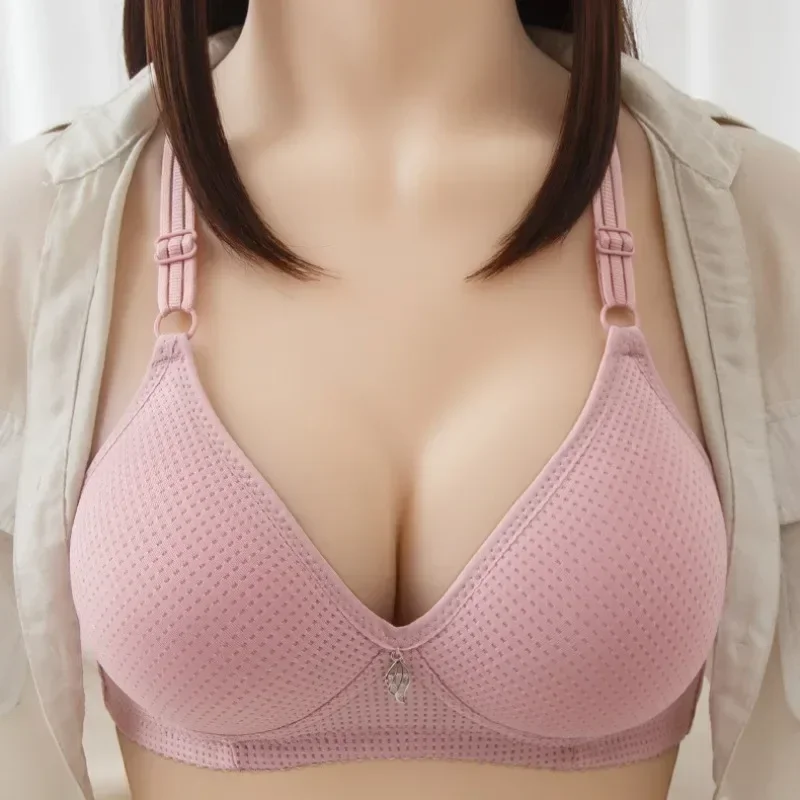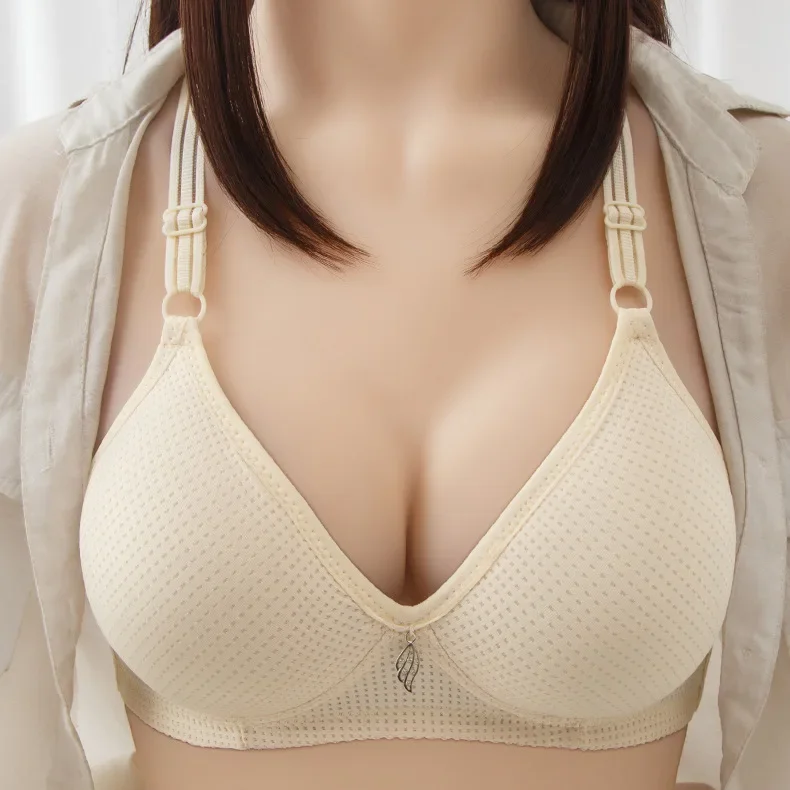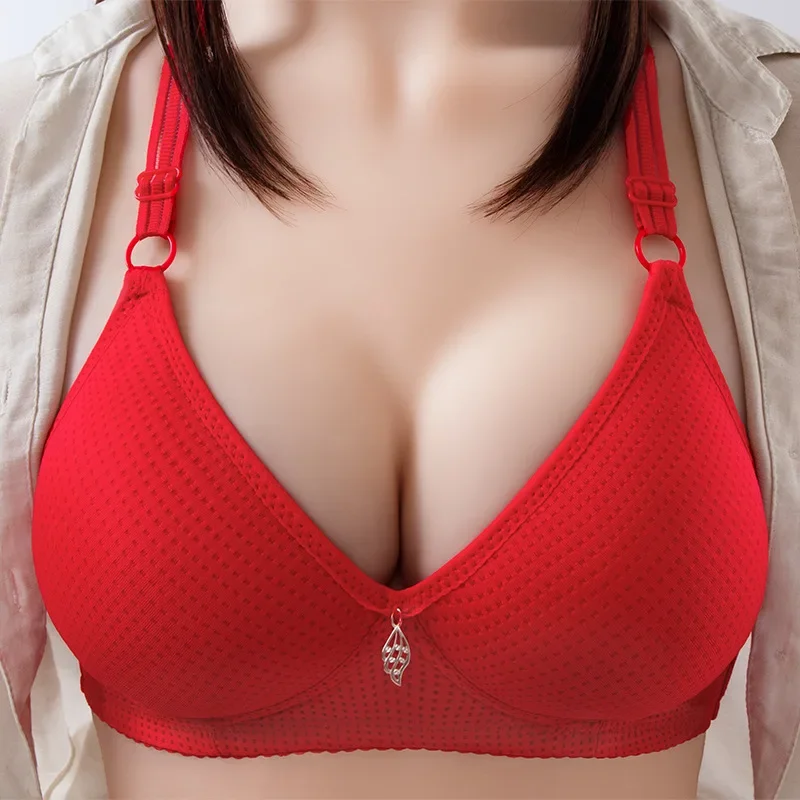Introduction to Bralettes and Bras
The journey into the intimate world of undergarments brings us to a common crossroad: the choice of difference between bra and bralette. Most of us are familiar with the bra, a tried-and-true companion providing support and shape for various occasions. However, the bralette has surged in popularity, offering a blend of lightweight comfort and stylish versatility. Both garments serve the purpose of supporting the breasts, but they differ significantly in construction, wearability, and aesthetic appeal.

As we delve into the difference between bra and bralette, we’ll explore the unique features each provides. Traditional bras are designed with support in mind — equipped with structured cups, underwires, and adjustable straps, they hold and shape the bust. Bralettes, on the other hand, are the carefree counterpart; they typically lack underwire, prioritize comfort, and offer soft, minimal support while showcasing a range of playful styles and designs.
The choice between a bra and a bralette is not just about selecting undergarments; it’s about choosing how to experience comfort, support, and fashion. We’ll examine the pros and cons of each, the occasions they’re best suited for, and the latest trends in styling. In this section, prepare to uncover what sets these two staples apart and learn how to make the best choice for your body type, lifestyle, and personal preference.
What is a Traditional Bra?
A traditional bra is an undergarment that offers robust support for the breasts. It’s built with features such as underwires, molded cups, and adjustable straps that provide structure and shape. Traditional bras come in various styles, including full-coverage, demi-cup, and push-up designs to suit different clothing and occasions. They are primarily used to enhance the silhouette of the body, giving a smooth shape under tight-fitting tops and dresses. With a sizing system that combines band and cup sizes, traditional bras aim to fit the specific contours of each person’s body, offering a personalized fit.
Features and Designs of Traditional Bras
Traditional bras are recognized for certain key elements:
- Underwire: Provides lift and structuring around the bust.
- Molded Cups: They shape and support the breasts effectively.
- Adjustable Straps: Allow for a customizable fit to various body types.
- Hooks and Eyes Closure: Secures the bra around the body’s midsection.
- Diverse Varieties: Including t-shirt bras, minimizers, and plunge bras.
Given their structured design, traditional bras are particularly suitable for those seeking firm support, especially individuals with larger bust sizes.
When to Opt for a Traditional Bra
Choosing a traditional bra is ideal in several scenarios:
- For formal attire and professional settings where a clean silhouette is desired.
- If engaging in activities that require extra support, such as brisk walking.
- During events where you wear strapless or backless dresses and need a discreet lift.
- Anytime you need confidence that your undergarment will maintain its shape and support throughout the day.
In summary, a traditional bra is the go-to for secure, consistent support and an enhanced look under clothing. It’s practical for everyday wear and for those special occasions that call for a reliable undergarment.
Defining the Bralette
Bralettes represent a modern twist in women’s undergarments. Unlike traditional bras, bralettes boast a more relaxed design. They have no underwire and are generally less structured, offering a natural and casual feel. Made from soft fabrics, bralettes often present simple, yet effective support without compromising on comfort. This makes them particularly appealing for lounging or wearing under relaxed outfits.

Key Characteristics of Bralettes
- No Underwire: This means less pressure around the ribcage and a more natural appearance.
- Soft Fabrics: Typically crafted from lace, cotton, or blends for ultimate comfort.
- Light Support: Suitable for all body types, especially smaller busts that don’t need much lift.
- Varied Styles: Ranging from lacy and delicate to sporty and casual.
- Versatility: Wear them under clothes or as part of the outfit itself.
Advantages of Choosing a Bralette
- Unmatched Comfort: Ideal for everyday wear without feeling constricted.
- Stylish Designs: Bralettes come in trendy patterns and can be worn as fashion statements.
- Ease of Movement: Their less restrictive build is perfect for casual activities.
- Broad Appeal: They cater to all ages and can be more inclusive with standard sizing.
- Affordable: Often less expensive than their structured counterparts.
When comfort and laid-back style are top priorities, a bralette is an excellent choice. It’s a seamless addition to a casual wardrobe and appeals to those who prioritize freedom of movement along with a touch of style.
Comparing the Fit and Comfort
When it comes to undergarments, comfort is crucial. After all, these are items we wear close to our skin for long hours every day.
Support Levels in Bras vs. Bralettes
Traditional bras offer high support levels. They have structured cups and underwires. These features lift and shape the bust. Bralettes have a more relaxed fit. They provide light support, making them great for smaller busts or relaxed days.
Comfort Considerations in Everyday Wear
Bra comfort varies person to person. Some may find traditional bras with underwire uncomfortable. They may prefer the softness of bralettes. Others need the support bras offer. Consider your daily activities and choose what feels best for your body.
Styling with Bralettes and Bras
Navigating the world of undergarments can be as much about fashion as it is about comfort. Understanding how to style bralettes and bras opens up a whole realm of wardrobe possibilities. Let’s dive into how each option can enhance your fashion choices.
Fashion-Forward Ways to Wear Bralettes
Bralettes have emerged as a stylish staple that transcends traditional lingerie. With their delicate designs and comfortable fit, they also double as trendy outfits. Here are fashion-forward ways to incorporate bralettes into your wardrobe:
- As a Top: Pair a lacy bralette with high-waisted jeans for a chic look.
- Under Sheer Tops: They add intrigue beneath see-through shirts while offering coverage.
- With Blazers: For a sophisticated edge, layer a bralette under a blazer.
- Festival Fashion: Team a vibrant bralette with shorts for a boho vibe.
- Beneath Low-Cut Dresses: Peek a bralette’s lace under a plunge neckline for subtle charm.
These versatile pieces are not just for the petite. Many bralette designs offer support for fuller figures too. Embrace them as a fashion piece and enjoy their blend of style and comfort.
Situations Where Bras are the Go-To Choice
Bras maintain a pivotal position in styling, particularly when structure and silhouette are key. Consider choosing a traditional bra in the following situations:
- For a Smooth Outline: Under fitted tops, a bra provides a sleek shape.
- During Workouts: Choose sports bras for high-impact activities for good support.
- With Formal Attire: A structured bra enhances your outfit’s look for events.
- When Extra Support is Needed: Large busts might require the lift only a bra can give.
Thus, while bralettes add a touch of style and freedom, traditional bras offer specific benefits that make them indispensable in certain scenarios. Take note of your outfit and choose accordingly to achieve the best look and feel.

The Pros and Cons of Each Option
In decision-making, especially when it pertains to comfort and style, weighing the pros and cons is essential. This is true when considering the difference between bra and bralette. Let’s examine the positive and negative aspects to better inform your undergarment choices.
Benefits of Wearing Traditional Bras
Traditional bras are known for their remarkable support. They lift and shape the bust, creating a desired silhouette under clothing. Ideal for fuller busts, they offer a precise fit with specific band and cup sizes. Moreover, they provide a polished look necessary for professional or formal occasions. Traditional bras stabilize the breasts during physical activities, minimizing movement and potential discomfort.
Downsides of Bras and Underwire Problems
Despite the benefits, traditional bras often have downsides. The underwire, while supportive, can dig into the skin, causing discomfort after long wear. Over time, the underwire might protrude through the fabric, leading to irritation. Structured cups can feel restrictive, limiting the freedom of movement for many wearers.
The Upside to Wearing Bralettes
Bralettes bring a world of comfort and style. They are light and move with your body, providing a relaxed fit. Often designed with appealing lace and patterns, bralettes can be a fashion focal point. They’re ideal for leisure activities and can even be worn as crop tops. For those with smaller busts, bralettes offer sufficient support and a natural shape.
Potential Drawbacks of Bralettes for Certain Body Types
While bralettes are versatile, they may not be perfect for everyone. Those who require more support may find bralettes lacking, especially for larger busts. The often simplistic sizing—small, medium, large—can lead to fit issues for those who don’t fit this standardized scale. Despite these considerations, many find a beloved place for bralettes in their wardrobe for their comfort and style.
In summary, both bras and bralettes have their own set of advantages and limitations. Your choice should align with your personal needs, preferences, and the specific requirements of your attire and lifestyle.
Conclusion: Making the Best Choice for You
In choosing between a bra and a bralette, consider comfort, support needs, and style preference. Are you seeking firm support for a larger bust? A traditional bra might be your best pick. Do you crave comfort and a fashion-forward look? A bralette could be the way to go. Remember these points:
- Comfort: Do you want a snug fit or something more free-flowing?
- Support: Do you need strong lift or are you comfortable with minimal support?
- Style: Are you going for a sleek undergarment or making a style statement?
- Occasion: Is it daily wear, a workout, or a special event?
- Body Type: Are you petite or fuller-figured? Choose what fits well.
In the end, there’s no right or wrong choice. It’s all about what feels good and suits your needs. The difference between bra and bralette is personal. Some days, a bra fits the bill. On other days, a bralette adds ease. Keep your wardrobe versatile with both options. You decide what to wear based on your mood, outfit, and the day’s activities. Trust your instincts. Personal choice is key in the bra vs bralette decision. Feel good in what you wear and wear it with confidence.
